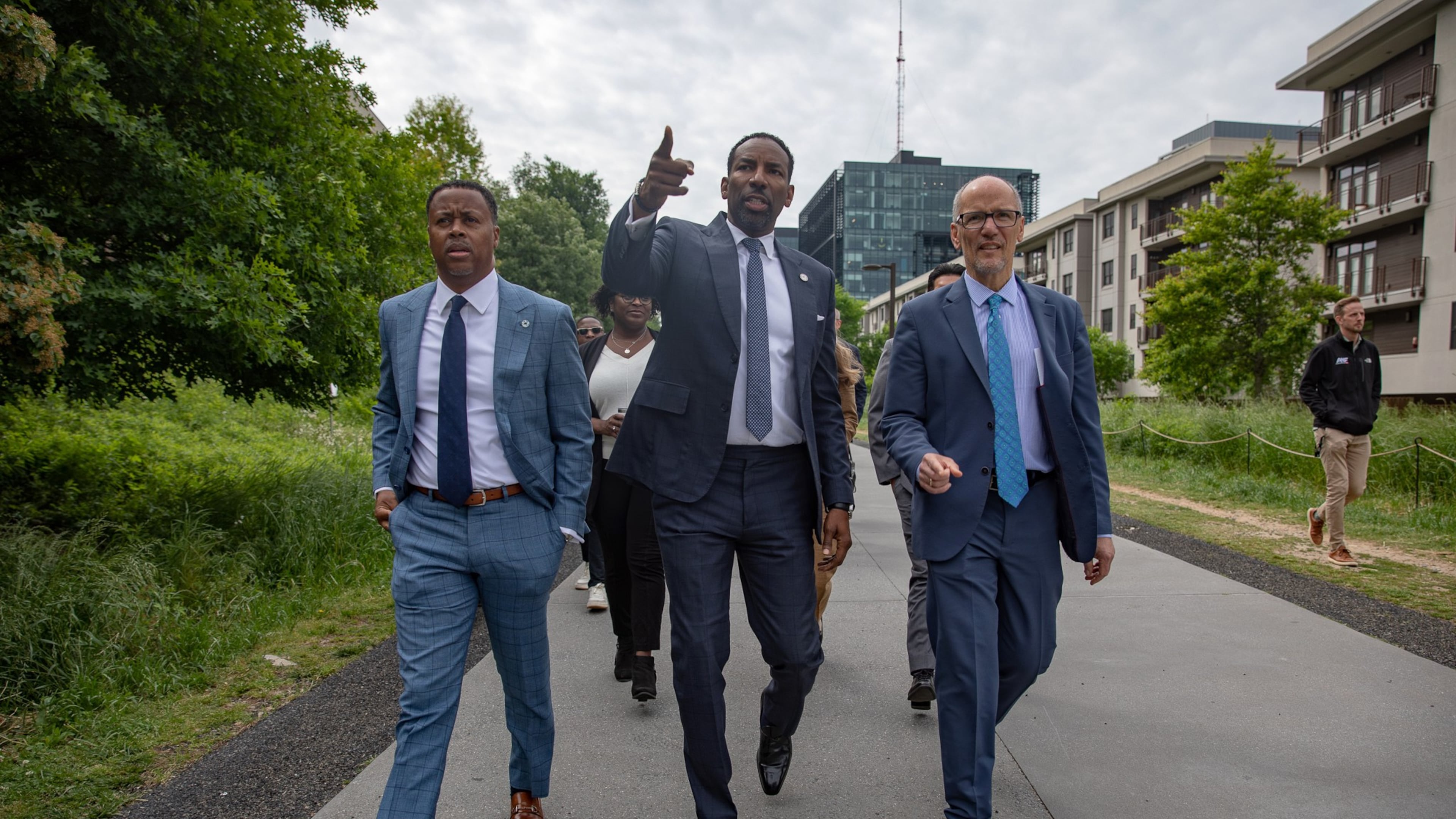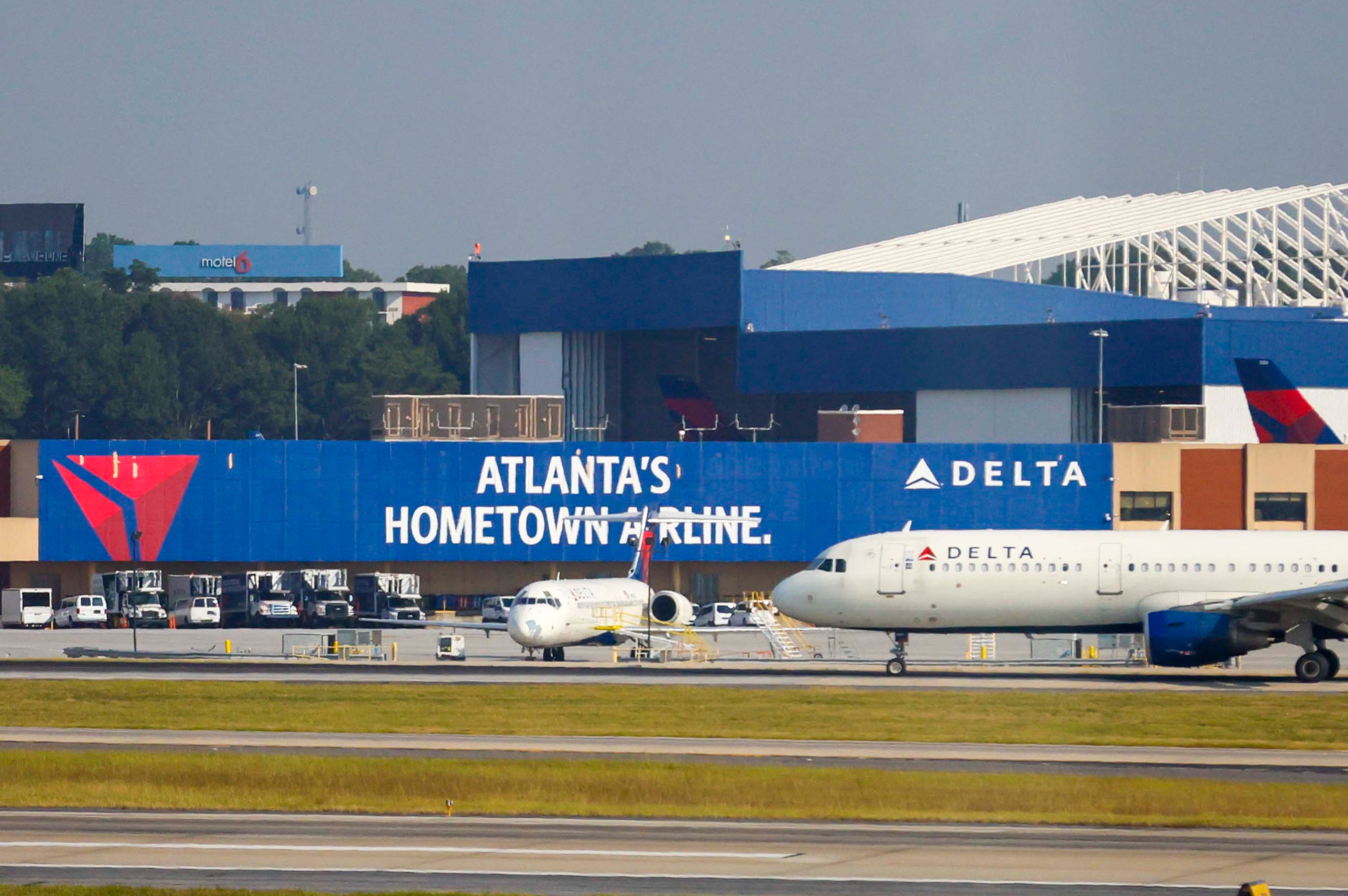How Mayor Dickens wants to spend Atlanta’s tax district extension revenue

A more than 200-item project list sent to Atlanta City Council members this week gives the first look at how Mayor Andre Dickens wants to spend more than $5.5 billion generated by a citywide tax allocation district extension.
The first-term mayor’s proposal, announced at a flashy news conference inside City Hall last month, looks to extend Atlanta’s eight tax allocation districts — also known as TADs — beyond 2050, as most are set to expire in 2030.
The move would dedicate nearly 15% of the city’s tax digest to what are essentially restricted funds separate from the city’s general revenue.
While the mayor’s office projects a $5.5 billion revenue opportunity through the TAD extension, the total project list comes with a $14.7 billion total price tag, according to documents obtained by The Atlanta Journal-Constitution.
In an email to council members sent Monday, Chief of Staff Courtney English stressed that the list is a draft and not binding or final. But the document gives crucial insight into where billions of dollars might be doled out across the city for decades to come.
Some of the biggest ticket items where the mayor is hoping to utilize TAD funding are major transit projects including nearly $730 million for Dickens’ four MARTA infill stations announced last year, $628 million for light rail along the Beltline’s Southside trail and around $845 million to extend the existing Atlanta Streetcar east and west.
The mayor’s office confirmed to council members last week that the project list doesn’t include plans for light rail along the east side of the Beltline trail where construction was set to begin next year before Dickens pulled his support. It would only fund rail on the southside.
It does include $130 million for phases II and III of the Stitch — the ambitious effort to cap Atlanta’s Downtown Connector, project leaders say, is moving forward despite uncertainty over federal funding.

Dollars will also be spent to bring the TrailsATL Master Plan to life and to partially fund an unnamed $800 million health project that hints at potential plans to fill the city’s health care gaps.
The TAD revenue project list dedicates the most funds to transit at more than $2.3 billion, followed by $1.4 billion for parks and trails, $1.2 billion for housing, $265 million for health initiatives, $219 million for public space and infrastructure improvements, $77 million for commercial projects and $20 million to go toward education.
Initiatives included in the larger categories range widely from bolstering fresh food access and supports for small businesses to blight remediation and office-to-residential projects.
TAD dollars don’t fund the totality of every estimated project cost, raising questions about what happens if the scope changes or additional funding can’t be found elsewhere.
Praise and skepticism
Extending all of Atlanta’s TADs is a controversial proposal that’s been met with both praise and skepticism. The mayor’s office and supporters say that the funds are necessary to revitalize underserved areas of the city that have struggled to keep up with growth.
But critics say an extension would lead to a tax increase for residents who will have to fill the gaps left by the revenue that’s been dedicated to the specific TAD areas.
Some also point to less public oversight of the multi-billion-dollar funding channels that would be managed through Invest Atlanta — the city’s economic development arm — and not by Atlanta’s elected officials.
City Council President Doug Shipman described the project list as “very broad in its scope” and said he worries different mayoral administrations with varying priorities would change the funding focus overtime using the Invest Atlanta board without input from council members.
“This is a significant amount of money major projects,” he said. “And if this doesn’t have a upfront vote from the public — which it doesn’t require — and it doesn’t have a way for elected officials to make changes to the projects downstream, it has the potential to break the trust between the public and the government.”
As of now, it’s unclear whether residents will get the chance to weigh in on the project list as they did for the city’s major infrastructure bond packages like Renew Atlanta and Moving Atlanta Forward.
“Should the TADs be extended, we will welcome the opportunity for neighborhoods to formally and informally provide input on what projects are most important to them,” the mayor’s office said in a statement Wednesday.
Council members raise concerns
The Dickens administration is pushing for TAD legislation to earn Atlanta City Council approval before January, when new members elected by voters in November are set to be sworn in.
But the extension also requires buy-in from Fulton County and the Atlanta school board.
Council members got their first public opportunity to question the mayor’s staff on the extension at a committee meeting last week. They raised red flags about oversight of project spending and whether the county and school system can afford to give up tax revenue.
Council member Mary Norwood also pointed to the lack of information the city’s elected officials get on how TAD revenue is being used versus the extensive, annual review of the general fund budget aimed at hashing out spending priorities.
“(TAD spending) has not been the same kind of discussion that we have with our general fund budget (where) we get weeks and weeks of information,” she said.
During the presentation, English painted the extension as a necessary tool to bolster the city’s underserved neighborhoods.
English, who is spearheading the initiative, also told council members at the meeting that they would move forward with the TAD extension even if Fulton County and APS vote down the extension.
“I would absolutely advocate for this still to move forward — we need every dollar we can, as fast as we can, to improve the conditions of these neighborhoods,” said English, a former Atlanta school board member. “It would be unfortunate if folks decided to pull back from the table.”
If that’s the case, the city would only get about $1.4 billion over the next 30 years from extending the city’s TADs.
“I think you have a real issue here,” said Council member Eshé Collins, who is also a former school board chair. “You have a school district saying they’re trying to close a $100 million gap and that’s just for one year.”
She also added that Fulton County is looking for ways to fund a $1.2 billion jail overhaul.
“I do think it’s extremely important to not take this relationship lightly in terms of the commitment,” she said.
Editor’s note: This story has been updated to correct the percentage of the city’s tax digest that is within tax allocation districts.




